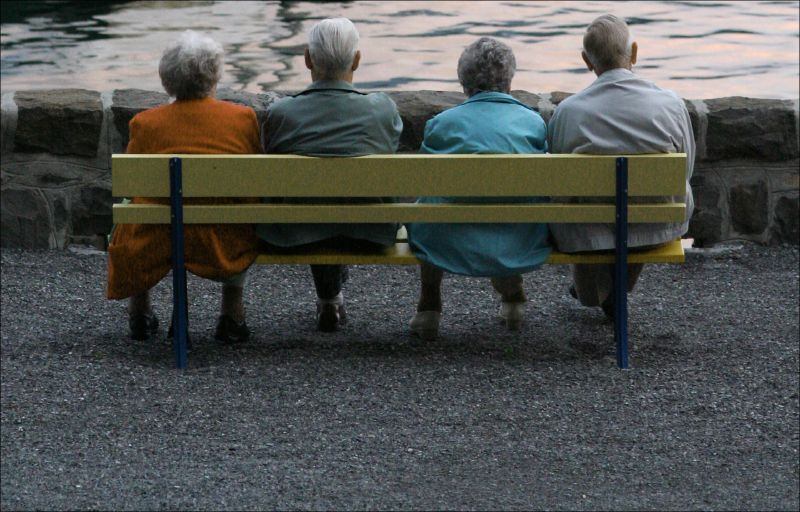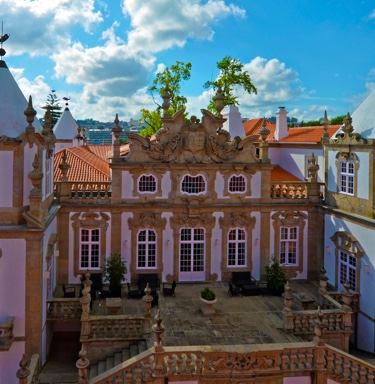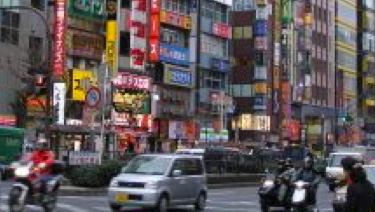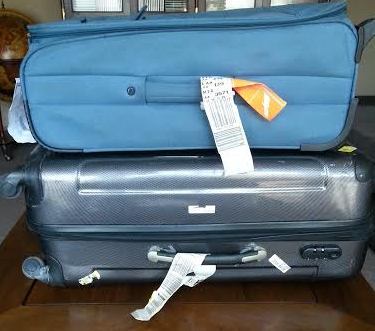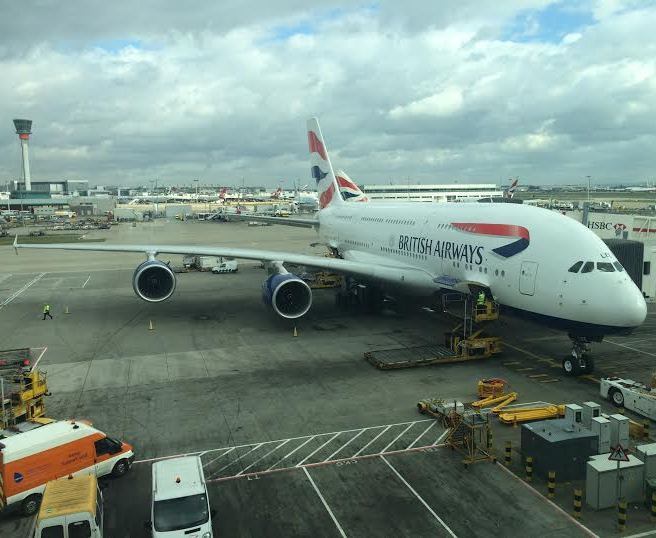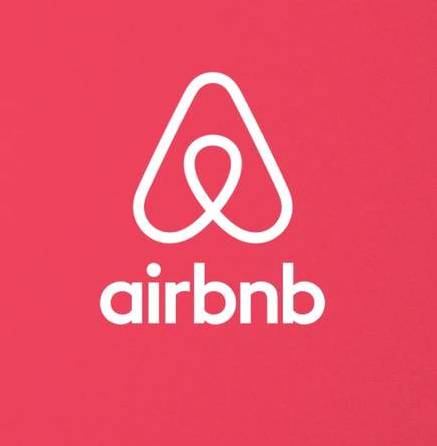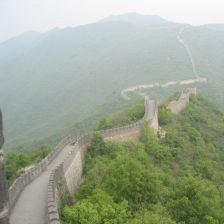 Cities have existed near present-day Beijing for more than 2,500 years, and the depth of this history can be glimpsed at sites like the Forbidden City, the Summer Palace, and the Temple of Heaven.
Cities have existed near present-day Beijing for more than 2,500 years, and the depth of this history can be glimpsed at sites like the Forbidden City, the Summer Palace, and the Temple of Heaven.
These destinations are worth your time, and it goes without saying that the Great Wall is a must-see. But a city this big (with approximately 12 million residents, it’s one of the biggest in the world) has much more to offer than these well-known destinations.
So don’t be afraid to go exploring into the side streets and through the back alleys to some really interesting places you’ll rarely find in your guidebook.
Rockin’ Out
Beijing is not known for its rock and roll music scene. In fact, there was no such thing as rock and roll in China until the 1980s, when pirated recordings from the West began to trickle in. Today, sticky-sweet pop from Hong Kong and Taiwan remains far more popular on the mainland than genres such as rock, jazz, and rap. In recent years, this has been quietly changing, and now there are a few clubs in Beijing that crank up the volume.
13 Club in Wudaokou is one of the best. Known for cheap beer and loud rock music, this is the place to experience truly authentic Beijing youth culture, check it out. The club is located at 161 Lanqiying on the west side of Chengfu Road (we suggest showing the address to a taxi driver). For more rock and roll action, try out the club Mao Live, which is located just east of the Drum Tower at 111 Gulou Dongdajie.
If jazz is your thing, try out the East Shore Live Jazz Café, one of the best among Beijing’s rather small selection of jazz clubs. The club hosts live acts from Thursday to Sunday and is located on the second floor of 2 Qianhai Nanyan Lu in the Xicheng district (once again, show the address to a taxi driver).
Amusing Yourself
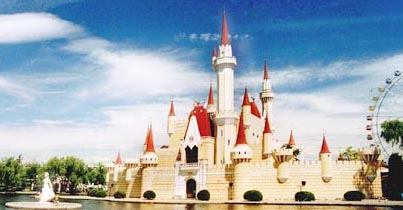
There’s no Disneyland in mainland China yet, but the Shijingshan Amusement Park brings suspiciously authentic Disney-style magic to Beijing. (See, if this were Disney, it would be the epitome of a tourist trap, but since it’s not …)
There is a castle that you could easily mistake for Cinderella’s Castle and a structure that bears a startling resemblance to Epcot Center’s Spaceship Earth, not to mention mightily familiar mouse, duck, and fairytale characters roaming around.
The inspiration is fairly obvious, and if you’d like to have a look at this surreal spectacle, you had better do so before China starts taking international complaints about copyright violations seriously.
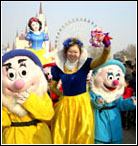 To get there, take the subway to Bajiao Youleyuan. Admission costs 10 RMB, or about $1.35, though most rides do cost extra. They do have an amusingly-translated English web site here.
To get there, take the subway to Bajiao Youleyuan. Admission costs 10 RMB, or about $1.35, though most rides do cost extra. They do have an amusingly-translated English web site here.
Although it offers a range of Western-style attractions including a couple roller coasters and a log ride which will get you very wet, Beijing Amusement Park (“Beijing Youleyuan”) draws few international visitors. This makes it, in one way, a better place to experience Chinese culture than the locations on the beaten tourist track.
You could argue that the reason it draws so few international visitors is because its attractions are second-rate compared to western parks. The fact that there’s no subway stop nearby, forcing you to use the crowded bus system or pay up for a taxi, probably contributes as well.
All the same, this park remains an unparalleled way to get away from tourist crowds and still have fun. We’re not sure about the safety record, though … The park is located in the Chongwen district and you can reach it via the number 60 bus. The cost for a regular ticket is 120 RMB, or about $16.
Getting Wild at the Wall
The Great Wall isn’t actually in Beijing, but it’s within reasonable traveling distance and is inevitably on every Beijing traveler’s itinerary. Most people end up going to the section at Badaling, which has been fully restored and outfitted with cable cars and other tourist trappings. Badaling offers really nice views and it’s easy to get to from Beijing, but it’s choked with people and certainly isn’t going to offer anything approaching a private experience.
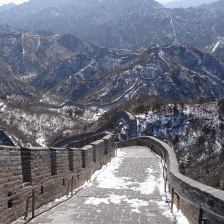 But there’s no reason you have to visit the wall at Badaling, or at other developed sites such as Mutianyu or Simatai. Remember that the Great Wall is really, really long, and that most of it remains in a ruinous state.
But there’s no reason you have to visit the wall at Badaling, or at other developed sites such as Mutianyu or Simatai. Remember that the Great Wall is really, really long, and that most of it remains in a ruinous state.
If you want to go to a non-touristed section of the Wall, it’s as simple as finding a driver who will take you there. You should be able to locate a willing chauffeur anywhere taxis congregate. You could ask to go to Huanhuacheng, an un-restored section of the wall popular with hikers, or you could get out a map and point your finger randomly at someplace that looks remote.
Remember that crumbled sections of the wall can be very dangerous to climb on, and beware of local “entrepreneurs” demanding illegitimate tolls around the wall’s periphery (no matter what they say, they’re probably just making it up). If you hire a driver for the day, pay no more than half the fare up front to ensure he doesn’t take off without you, and if he’s reasonably pleasant to be around, invite him to lunch with you.
Shopping at the Wholesale Castle
Beijing has a lot of pretty cool shopping destinations that cater specifically to foreigners. At markets like Yaxiu and Hongqiao, you’ll find an assortment of fake brand-name goods, jewelry, electronics, and more useless knickknacks than you’ll ever know what to do with. These places have several drawbacks, though.
First, you tend to see the same goods over and over again, and second, the salespeople are often extremely aggressive. They assume your wallet is fat and they want to stick their hands into it. Luckily, you can get away from this madness at the Jinwuxing Market, located near the Dazhongsi subway stop. This market has pretty much everything, including the kitchen sink.
They stock home improvement supplies, video games, suitcases, shoes, you name it. The selection is far more extensive than Yaxiu or Hongqiao or, for that matter, any Western-style department store. As a bonus, prices start lower than most anywhere else and the behavior is less insane.
The environs aren’t too charming – you’ll have to wade through a trash-filled parking lot in order to reach the entrance – but ample payoff waits inside. Give it a try. Note that although the market is just a hair south of the subway stop, you have to take a circuitous path to reach it. The market’s full name in Chinese is Jinwuxing Baihuo Pifa Cheng (“Golden Five Stars General Merchandise Wholesale Castle”).
Oh yeah, one more thing: Dazhongsi, the name of the subway stop, means “Big Bell Temple,” and sure enough, there is a temple with a very big bell in the vicinity. Many tourists skip over it, but you might consider stopping by to check out the extensive bell collection.
Eating a Lot of Stuff
The modern culinary scene in Beijing is pretty amazing. Twenty years ago, you couldn’t even find a hamburger, but now the city is crowded with Japanese restaurants, Thai, American, you name it.
It may not have occurred to you that, in the area of Chinese cuisine, you can try not only Beijing specialties such as roast duck; you can sample food from all across China. The cuisine of remote regions is totally removed from that normally prepared in Beijing, and there’s probably no more flavorful example than food from Xinjiang, a remote western province populated by Chinese Muslims. In Xinjiang, they eat bread instead of rice, and it seems that just about every dish contains lamb.
Crescent Moon Muslim Restaurant, which just opened in 2007, has quickly become known as one of the best Xinjiang restaurants in Beijing. If you’re in search of something truly different, and truly tasty, check it out. The restaurant is located at 16 Dongsi Liutiao in the Dongcheng district.
If you’d like to stick with a regional specialty, try a dining experience called hotpot (“huoguo” in Chinese). Hotpot is really fun to eat. You order a bunch of ingredients and cook them yourself in a pot of boiling broth. These places are all over the city, and people especially enjoy going to them during Beijing’s cold, cold winters. Haidilao is considered to be one of the best hotpot restaurants in Beijing, according to locals.
Though you won’t find it in your guidebook, you’ll likely find a line at the door. Haidilao has five locations throughout Beijing, and you can find the locations of all of them in the “Restaurant Research” section of Haidilao’s English website.
Alternately, if you want to treat yourself and are not bent on a strictly Chinese diet, try out a Korean barbecue place. You can easily have a filling dinner of huge piles of meat and kimchi and couple of nice frothy ice-cold beers for around $10. The wait staff will help you cook the meat on a grill in the center of your table. These places are all around, but for the sake of making things convenient, try Shanggu City Korean Village Barbecue at 5 Laiguangyingdong Lu. The restaurant adjoins expatriate grocery Jenny Lou’s in the Chaoyang district.
Sleazing the Night Away in Sanlitun
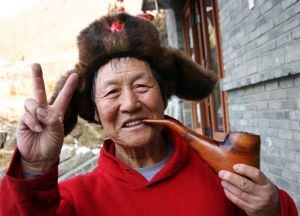 We must admit that we were surprised to find that many popular guidebooks neglect to mention Sanlitun, Beijing’s premier expatriate nightlife hotspot. OK, the alcohol is a lot more expensive here than it is in a regular Chinese restaurant and this is a poor place to establish contact with anything resembling Chinese culture.
We must admit that we were surprised to find that many popular guidebooks neglect to mention Sanlitun, Beijing’s premier expatriate nightlife hotspot. OK, the alcohol is a lot more expensive here than it is in a regular Chinese restaurant and this is a poor place to establish contact with anything resembling Chinese culture.
However, if you want to hang with the embassy crowd and don’t mind the slightly seedy feel, this is the place to be. There are many drinking and dancing places in Sanlitun. Bar Blue is known as one of the best, although the action doesn’t really start until pretty late in the evening (which is how you know you’re in a special place, since most of Beijing shuts down around 10 p.m.). Sanlitun is located in the Chaoyang district.
R&R on the Cheap
OK, after doing everything we just mentioned, you are probably very tired. That is why we cannot neglect to mention that Beijing is a great place to get a very inexpensive yet highly satisfying massage.
If you don’t know where to go, massage parlors can be trashy, and some of the really cheap ones employ fake blind people who have absolutely no clue what they’re doing (according to persistent beliefs of indeterminate origin, blind people are the best at giving massages).
But one parlor that we can recommend is the reputable Aibosen Blindman Massage. An hour-long massage runs you 88 RMB, or about $12. You actually can beat this price elsewhere, but why bother for few dollars? Aibosen has a number of branches around Beijing, including one at A11 Liufang Beili in the Chaoyang district.
By Mike Day for PeterGreenberg.com.
Looking for more information on travel in China? Check out:
Bound for Beijing: A Guide to 2008 Olympic Travel
The Symbol of 21st Century China Travel: Demolish
Signs in China: A Guide to Understanding Common “Engrish” Expressions
Previously by Mike Day on PeterGreenberg.com:





